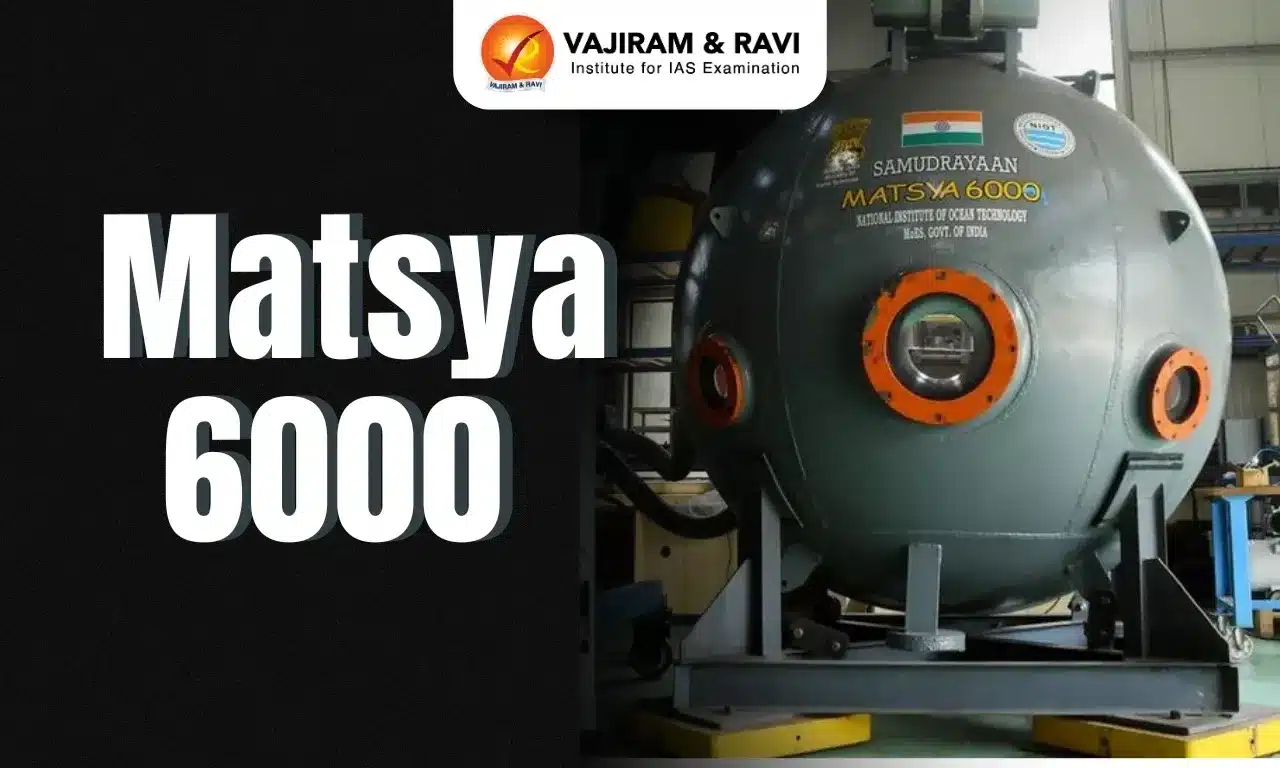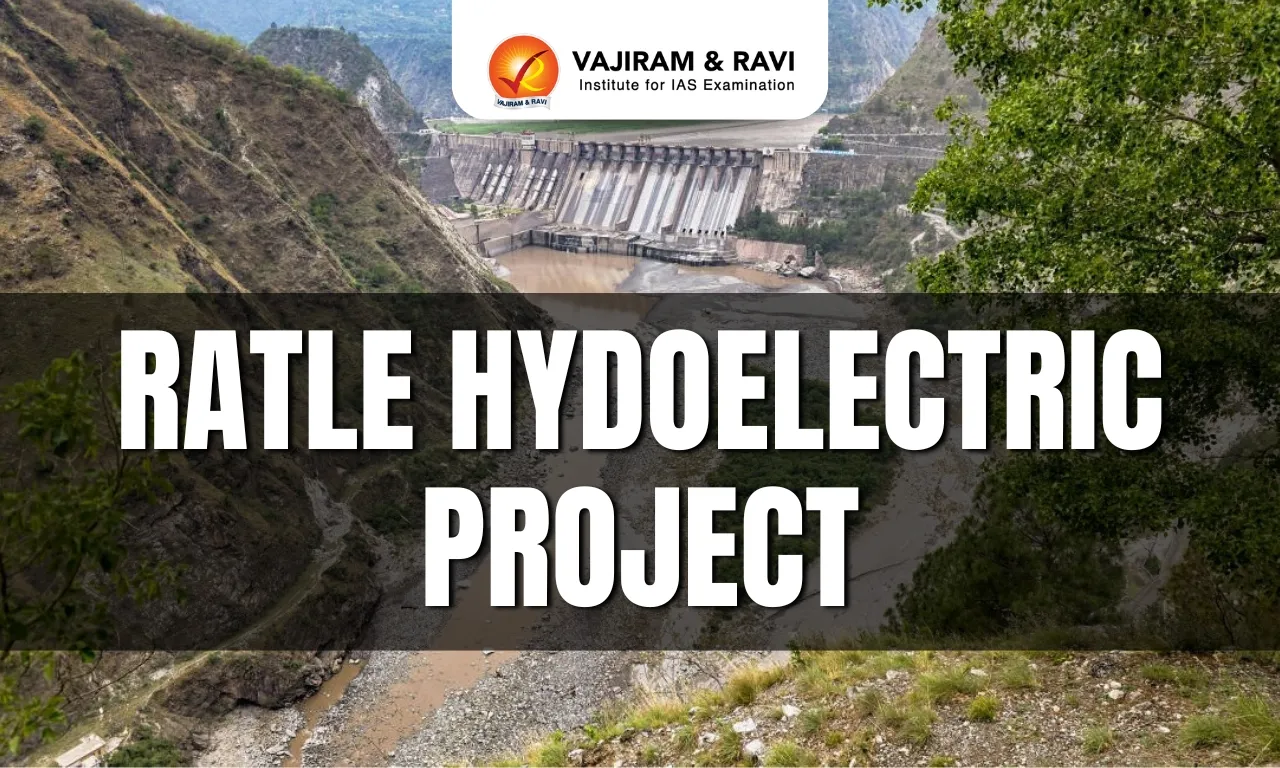Matsya 6000 Latest News
India’s first manned submersible, Matsya 6000, is expected to carry three people to a depth of 6,000 metres in the ocean by 2026, Union Minister of State for Science and Technology and Earth Sciences said recently.
About Matsya 6000
- Matsya 6000 is India’s deep-sea submersible designed for ocean exploration, particularly for deep-sea mining and biodiversity studies.
- Developed by the National Institute of Ocean Technology (NIOT) under the Samudrayaan Mission, it is capable of diving to a depth of 6,000 meters in the ocean.
Matsya 6000 Features
- It is equipped with cutting-edge technologies, including advanced life support systems, navigation equipment,robotic arms for sample collection, and high-resolution imaging systems.
- Matsya 6000 will house a 2.1-metre internal diameter Titanium alloy personnel sphere to safely carry humans to a 6000 m depth.
- The Titanium alloy personnel sphere is being integrated in collaboration with ISRO.
- The manned submersible will also be “equipped with subsystems for buoyancy management enabling descent/ascent, power, and control systems, maneuvring propellers, subsea intervention manipulators, navigation and positioning devices, data and voice communication systems, on-board energy storage batteries, as well as systems for emergency support.
- The submersible is designed to enable continuous operations at 6000 m depth for up to 12 hours with an emergency endurance of up to 96 hours for conducting deep water observation and exploration.
Key Facts about Samudrayaan Mission
- It is India’s first manned mission to explore the deep ocean.
- It is aimed to develop a self-propelled manned submersible to carry three human beings to a water depth of 6,000 meters in the ocean with a suite of scientific sensors and tools for deep ocean exploration.
- It is designed to study the deep ocean resources and conduct biodiversity assessments as well.
- The mission will not disturb the ecosystem as the submersible is used solely for exploration purposes.
- The project is part of the larger Deep Ocean Mission, which supports the Central Government’s Blue Economy policy.
- Nodal Ministry: Ministry of Earth Sciences (MoES)
Matsya 6000 FAQs
Q1. Which institute developed Matsya 6000?
Ans. Matsya 6000 was developed by the National Institute of Ocean Technology (NIOT), Chennai, under the Ministry of Earth Sciences, Government of India.
Q2. Is Matsya 6000 manned or unmanned?
Ans. Matsya 6000 is a manned deep-sea submersible designed to carry three crew members to a depth of 6,000 meters for deep-sea exploration.
Q3. What is India’s first manned ocean mission?
Ans. India’s first manned ocean mission is Samudrayaan.
Source: HANS
Last updated on December, 2025
→ Check out the latest UPSC Syllabus 2026 here.
→ Join Vajiram & Ravi’s Interview Guidance Programme for expert help to crack your final UPSC stage.
→ UPSC Mains Result 2025 is now out.
→ UPSC Notification 2026 is scheduled to be released on January 14, 2026.
→ UPSC Calendar 2026 is released on 15th May, 2025.
→ The UPSC Vacancy 2025 were released 1129, out of which 979 were for UPSC CSE and remaining 150 are for UPSC IFoS.
→ UPSC Prelims 2026 will be conducted on 24th May, 2026 & UPSC Mains 2026 will be conducted on 21st August 2026.
→ The UPSC Selection Process is of 3 stages-Prelims, Mains and Interview.
→ UPSC Result 2024 is released with latest UPSC Marksheet 2024. Check Now!
→ UPSC Prelims Result 2025 is out now for the CSE held on 25 May 2025.
→ UPSC Toppers List 2024 is released now. Shakti Dubey is UPSC AIR 1 2024 Topper.
→ UPSC Prelims Question Paper 2025 and Unofficial Prelims Answer Key 2025 are available now.
→ UPSC Mains Question Paper 2025 is out for Essay, GS 1, 2, 3 & GS 4.
→ UPSC Mains Indian Language Question Paper 2025 is now out.
→ UPSC Mains Optional Question Paper 2025 is now out.
→ Also check Best IAS Coaching in Delhi

















